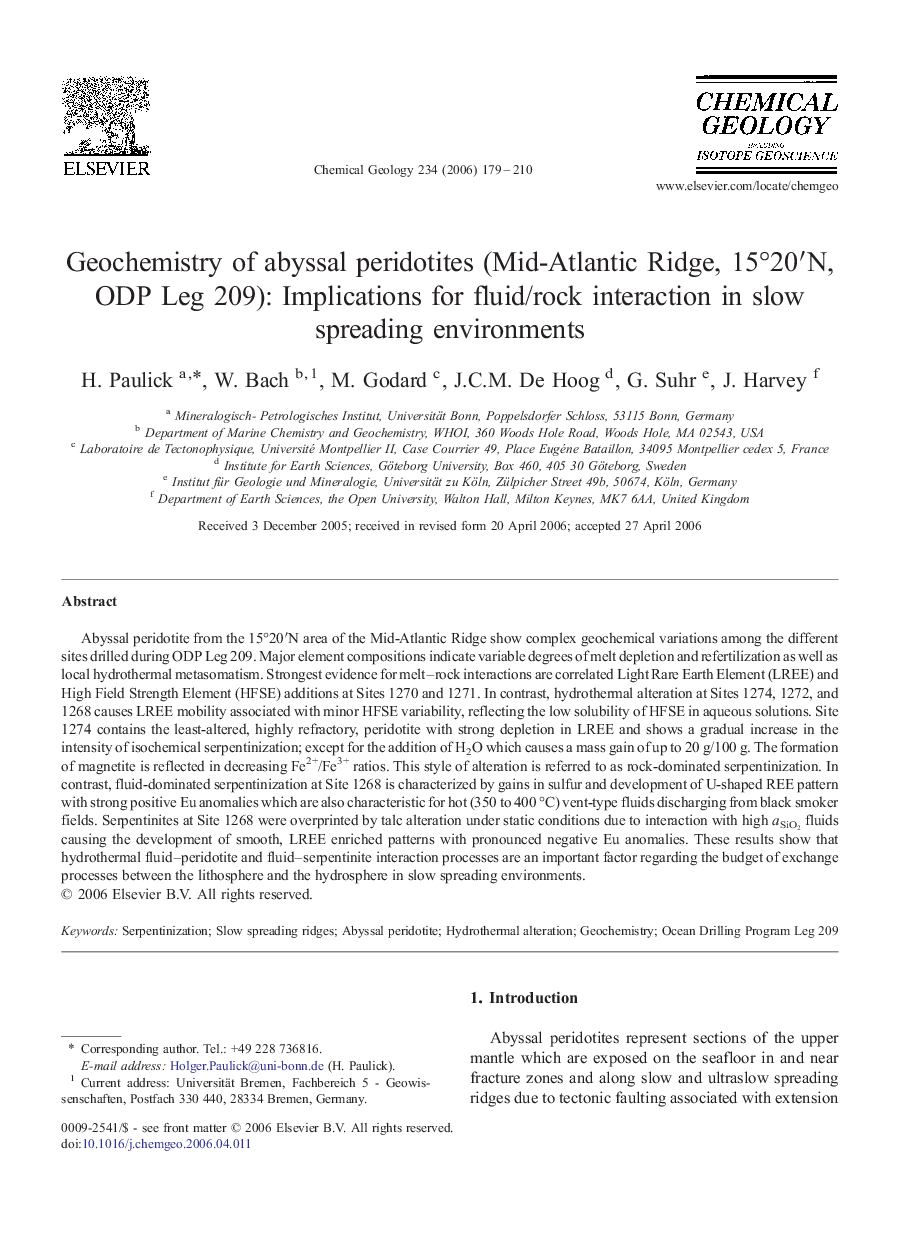| Article ID | Journal | Published Year | Pages | File Type |
|---|---|---|---|---|
| 4701315 | Chemical Geology | 2006 | 32 Pages |
Abyssal peridotite from the 15°20′N area of the Mid-Atlantic Ridge show complex geochemical variations among the different sites drilled during ODP Leg 209. Major element compositions indicate variable degrees of melt depletion and refertilization as well as local hydrothermal metasomatism. Strongest evidence for melt–rock interactions are correlated Light Rare Earth Element (LREE) and High Field Strength Element (HFSE) additions at Sites 1270 and 1271. In contrast, hydrothermal alteration at Sites 1274, 1272, and 1268 causes LREE mobility associated with minor HFSE variability, reflecting the low solubility of HFSE in aqueous solutions. Site 1274 contains the least-altered, highly refractory, peridotite with strong depletion in LREE and shows a gradual increase in the intensity of isochemical serpentinization; except for the addition of H2O which causes a mass gain of up to 20 g/100 g. The formation of magnetite is reflected in decreasing Fe2+/Fe3+ ratios. This style of alteration is referred to as rock-dominated serpentinization. In contrast, fluid-dominated serpentinization at Site 1268 is characterized by gains in sulfur and development of U-shaped REE pattern with strong positive Eu anomalies which are also characteristic for hot (350 to 400 °C) vent-type fluids discharging from black smoker fields. Serpentinites at Site 1268 were overprinted by talc alteration under static conditions due to interaction with high aSiO2 fluids causing the development of smooth, LREE enriched patterns with pronounced negative Eu anomalies. These results show that hydrothermal fluid–peridotite and fluid–serpentinite interaction processes are an important factor regarding the budget of exchange processes between the lithosphere and the hydrosphere in slow spreading environments.
